SaaS (software as a service) brands differ from those in other domains, and so do SaaS marketing strategies. Therefore, a SaaS startup needs to adopt a marketing strategy that highlights the solution's best side.
In a nutshell, digital marketing is a valuable path for a SaaS startup to get promoted. The marketing strategy should especially include analyzing data about prospects and customers.
We comprehensively analyze SaaS marketing strategies aimed at lead generation and lead nurturing. So, you will learn about the methods that have been proven to deliver outstanding results in building your SaaS product. Hopefully, they will be handy when you plan your effective SaaS marketing strategy.
5 main steps to keep in mind when building a SaaS strategy
Creating a SaaS marketing strategy involves several key phases to attract and retain customers effectively. Here's a structured approach to building a robust SaaS marketing strategy:
1. Use your knowledge of the target audience
A buyer persona is a research-based description of a typical customer who may purchase your SaaS. Such a profile shows a buyer’s background and personal traits. Also, the description presents a buyer's challenges and decisions to purchase your SaaS. Below is a sample buyer persona to help you create yours when planning your SaaS marketing strategy.
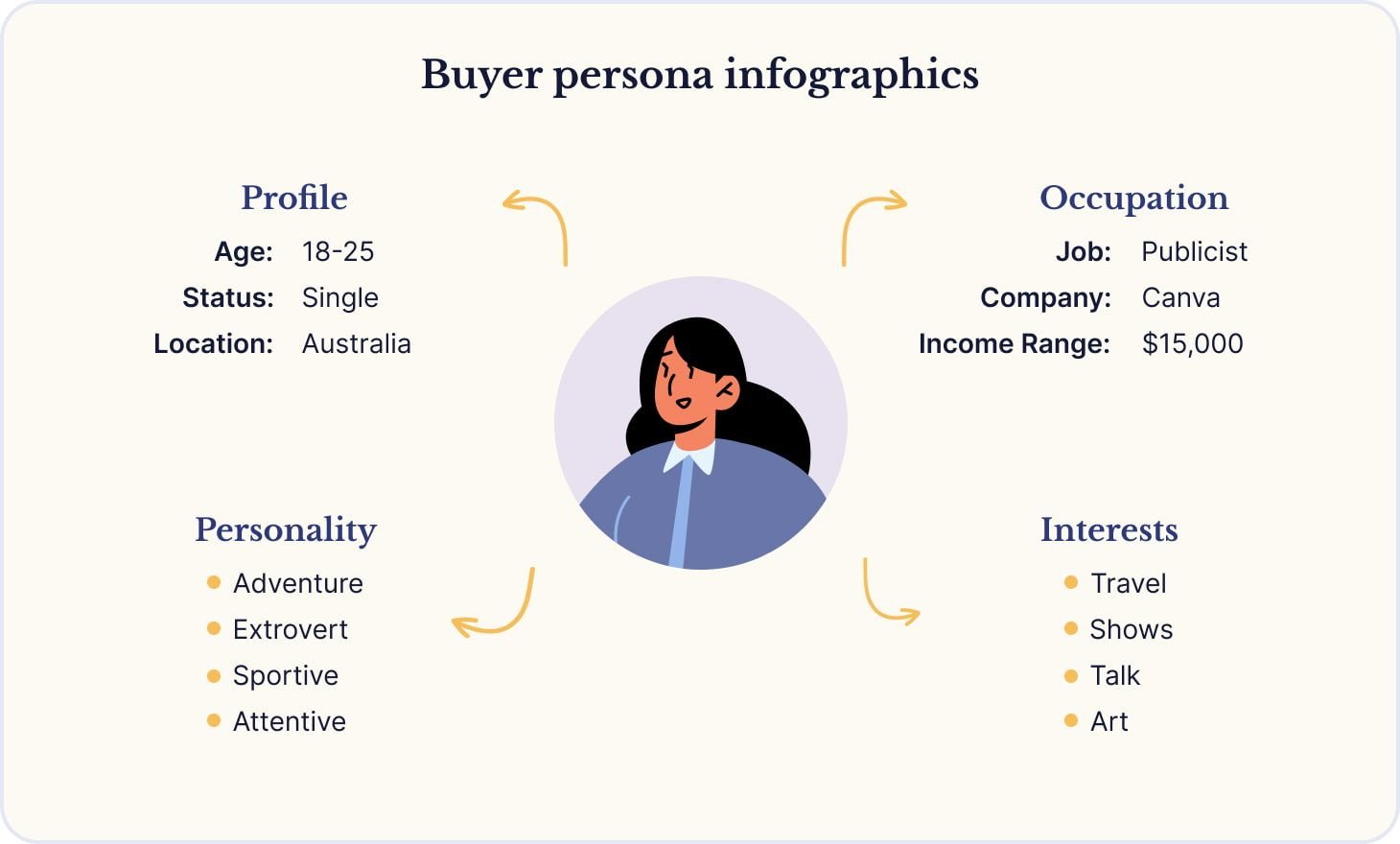
Creating a buyer persona is a step typically taken during product discovery. At this stage, we help you discover your SaaS business model potential. One of the aspects of the discovery is presenting your target audience, which covers the typical buyer personas.
2. Understand your competitors
Analyze competitors' marketing efforts and learn what they do great and where there is a way to get better. Thus, you will know what aspects to highlight in your SaaS marketing campaign to reach the target audience.
The following are the best practices that will help you learn more about your competition:
- Study their content on websites, blogs, and social media. This will give you a sense of their messages and how they present themselves.
- Review the materials on your niche trends and news. Monitoring your domain's developments will help you stay informed on changes in the SaaS market.
- Learn from case studies of other SaaS companies and how they succeeded. Case studies show what obstacles the SaaS companies faced and how they overcame them.
- Observe how your competitors appear in public. Their speaking in the media or at specialized conferences can become a valuable source of information for you.

3. Create a unique selling proposition
A unique selling proposition (USP) is a distinctive feature or approach that differentiates you from similar solutions. USP is an aspect showing how you solve the pain points of your target audience. The key USP elements that need to be highlighted in your SaaS marketing strategy are the following:
- Highlighting your product’s value. Your SaaS customers must be sure that the product is helpful for them.
- Avant-garde solution. Implementing a new technology that other solutions don’t offer attracts potential customers.
- Delicate offer. Suggesting a product should create an image of a SaaS company that respects users’ choices.
4. Provide SaaS customer journey
The SaaS customer journey is different from that of other industries. Building awareness and trust in your brand takes longer and requires more effort. The main reason is that the customer needs to evaluate the features, price, and support you offer. The factors can include anything that makes your product a successful competitor, such as a user-friendly interface.
Below, you can see possible touchpoints a user may pass using your SaaS.
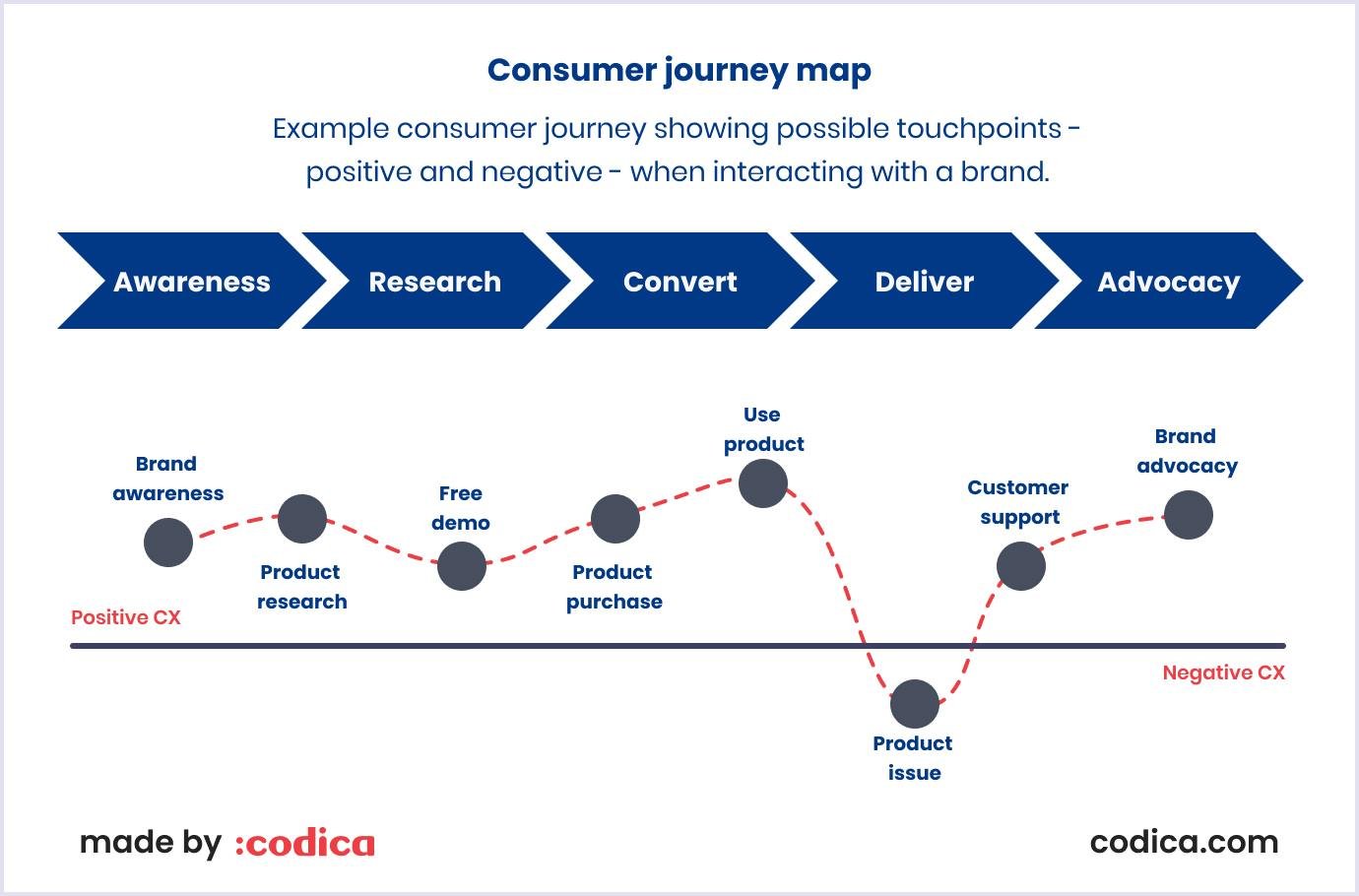
To help users learn about your product, you can use several marketing channels to show your SaaS’s benefits. If you are ready to put in more effort, you can provide live demos and short videos to inform customers of your product.
After the company has tried your product, you can offer them flexible plans and additional features that suit their needs. Also, think of payment plans depending on the different numbers of users, premium features, and services of your SaaS. This list is endless because companies are eager to pay for convenience. For instance, it can be an interface customized for a company’s specific needs.
5. Use the SaaS sales funnel
The sales funnel is a multi-stage process of making your potential customers aware of your product. The sales funnel is based on the AIDA principle: awareness, interest, decision, and action.
These are the stages your prospects move through until they become your customers. What do these steps mean?
Awareness is the stage when a prospect first discovers your product. After that, a prospect will show interest in your product and compare your tool with others. Then a prospect will dig deeper and learn more about your pricing. This leads to an action of purchasing your product. Thus, you lead your prospect to become a customer and then an advocate of your SaaS.
There is also a newer sales cycle approach that you can consider for your SaaS marketing strategy: a flywheel. Compared to the sales funnel, a flywheel reflects how your existing customers recommend your product to people they know. Such reviews help you create long-term relationships with clients and cut customer acquisition costs.
Below is a comparison of the sales funnel and flywheel by Hubspot.
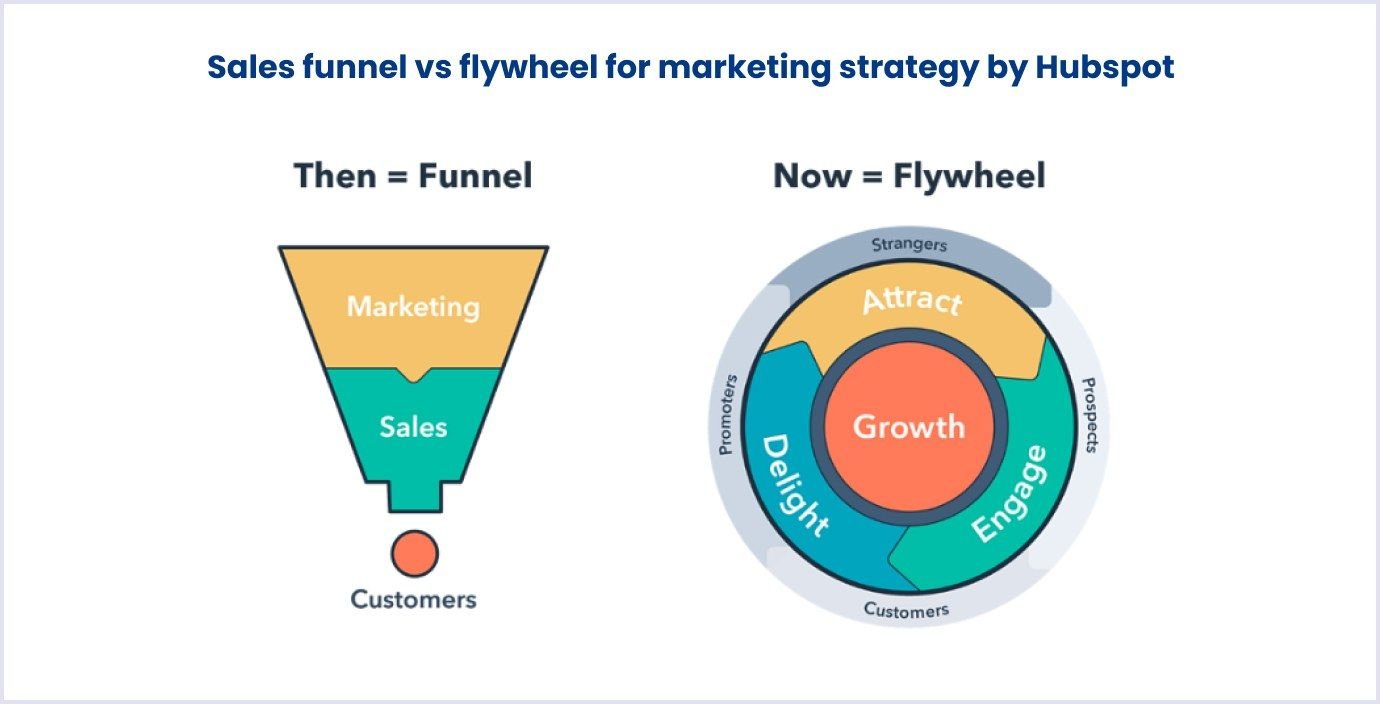
SaaS marketing strategy tools for lead generation
A lead is a person who shows interest in your product. Typically, they react to your product offer by signing up or subscribing to your SaaS. Lead generation methods for SaaS businesses aim to convert prospects into customers who will buy a product. Let’s see which methods you can use to generate more leads.
Social media
Our experience shows that social media is a powerful tool for SaaS marketing and presenting your product to the audience. Based on this knowledge, we describe efficient social media methods for your SaaS marketing strategy below.
- Prioritize the social media platforms that your customers use most.
- Create engaging content.
- Use social media ads.
- Partner with influencers in your domain.
For example, Semrush, a popular SEO (search engine optimization) tool, shares its content to advise its followers on marketing. The company enriches its materials by posting interesting memes or unusual keyword searches.
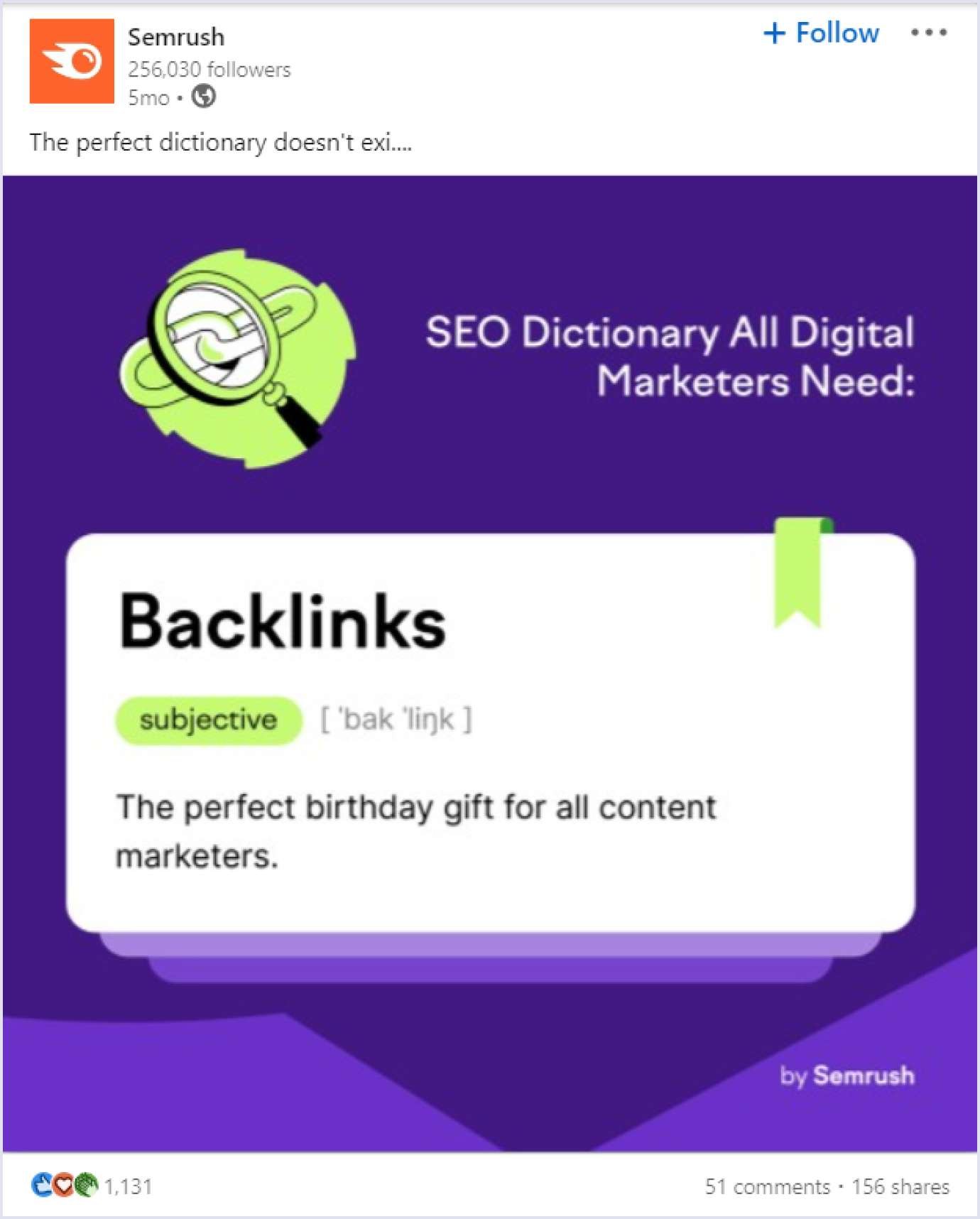
Content marketing for SaaS promotion
When creating a SaaS marketing strategy, consider the different types of content you can deliver to your customers. Each of them fits best to highlight the advantages of using your SaaS. Below, we describe what content you can create to spread knowledge about your product.
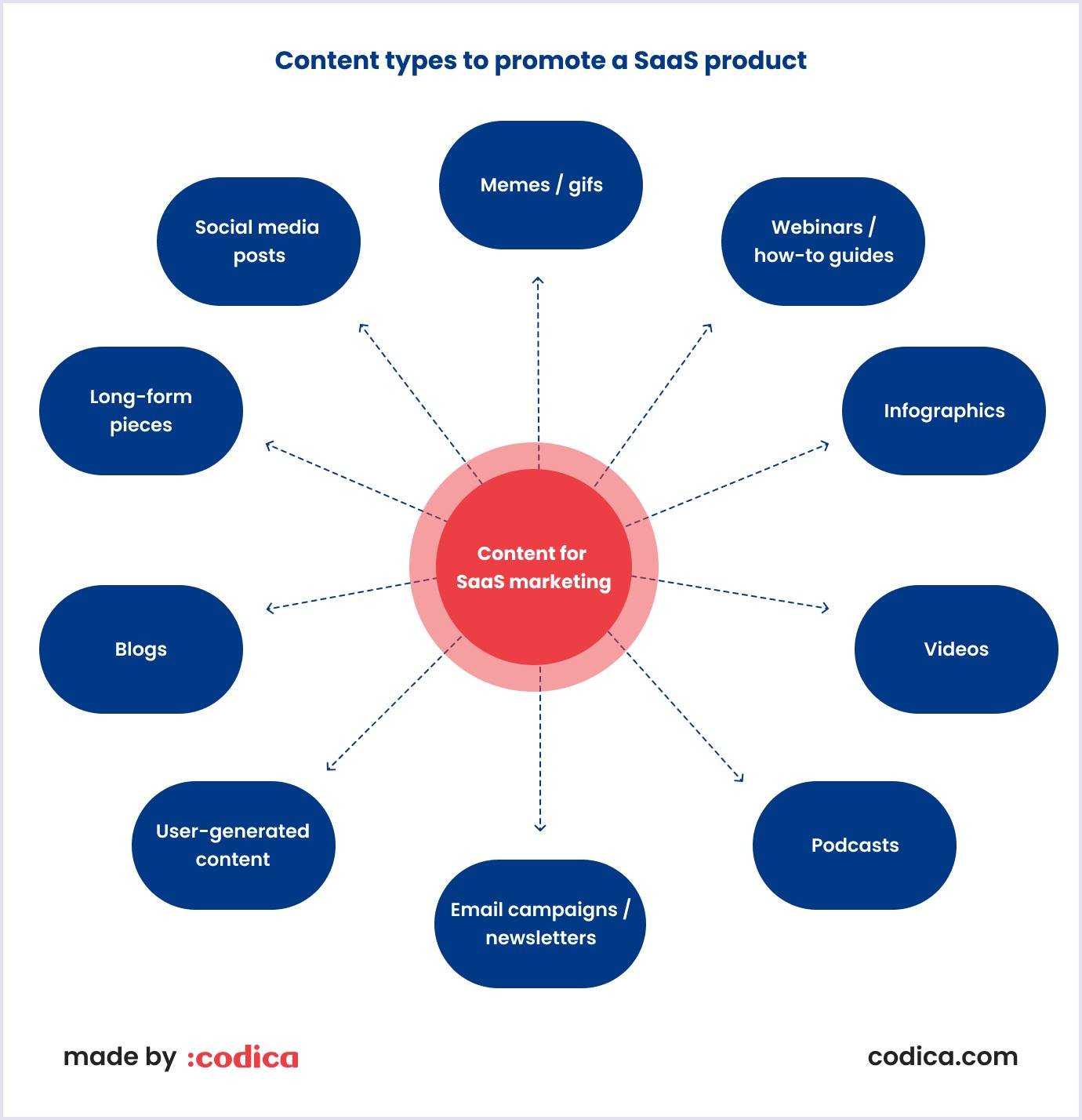
Content types for SaaS marketing strategy
Here are some content types commonly used in SaaS marketing strategies:
1. Comparison posts. In your comparison posts, you can highlight your product's unique features or pros compared to existing solutions. Surely, comparison posts should be created with ethics in mind. They should outline your expertise and be neutral about your competitors.
2. Demo videos. Initially, introduce generic information relevant to the viewers unfamiliar with your product. As time goes by, you can be more specific with your video. With this content marketing approach, you will cover viewers with different brand awareness levels.
3. Case studies. To promote your product, you can create case studies highlighting the features you included in your SaaS product. Case studies show your expertise and the value you bring to customers. That’s because they reveal the crucial points of customer success with your SaaS product.
4. Webinars. They are an excellent content marketing method to promote your SaaS and address your customer's pain points. So, you can use many techniques to keep your audience involved during the webinar.
Useful content tactics for SaaS marketing
Creating content to promote your SaaS involves tactics that will help you stand out from your competitors. Let's examine these methods in more detail.
1. Creating a content moat
This is a marketing tactic when you create content using niche terminology. If you answer the questions using specific terms, like SEO or DevOps terminology, your articles will stand out in the search results.
As traffic to your website grows, thanks to valuable explanations, you will also see a rise in backlinks. For example, if you type "What is DevOps?", the top description will be from Amazon Web Services (AWS).
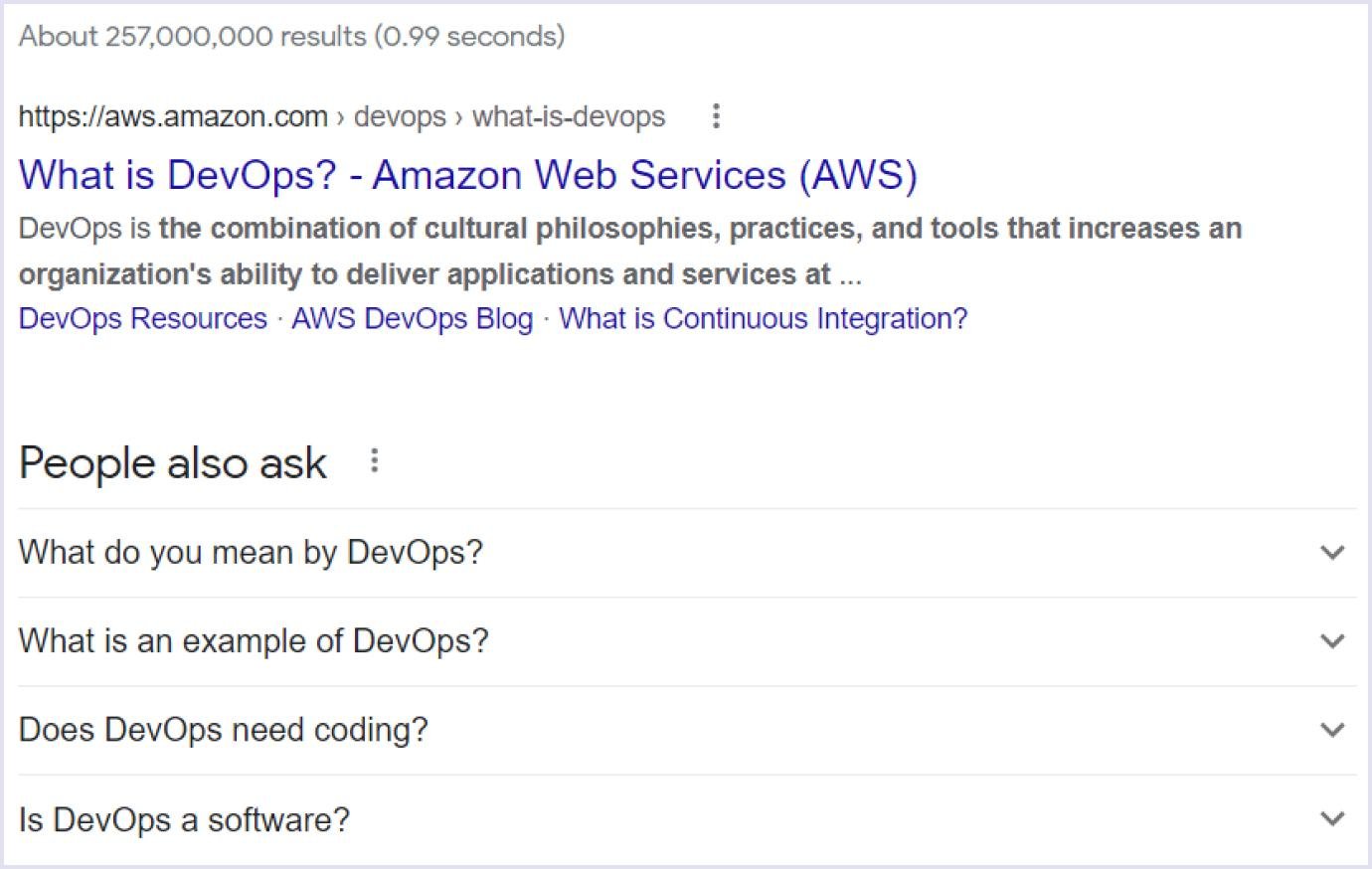
2. Content repurposing
Once you create content, you can adapt it to different SaaS marketing channels. For example, you can turn a podcast into an article or use a picture from an article to create a Twitter thread.
Search engine optimization (SEO)
The right SEO strategy brings you organic traffic. This is how website visitors will learn about your product without ads. That is why SaaS businesses focus on SEO.
The key aspects to consider for SEO optimization of websites and landing pages are the following:
- What questions do your customers ask;
- Challenges and problems they have;
- Related topics that the audience is interested in.
The next step is to create quality backlinks and referrals to your website or landing page. Useful links can be built by creating helpful content that people will share on social media or with their friends. Also, you can partner with prominent platforms or sites delivering content complementary to your SaaS niche.
As SEO brings results after some time, it is advisable to accompany it with pay-per-click (PPC) campaigns. So, your PPC campaigns will target the right audiences, raising the chances of improving the conversion rate.
Improve calls to action (CTA)
A CTA highlights to potential customers what they can do to purchase and work with your product. You can include CTAs for any stage of your SaaS marketing strategy and your prospects’ journey.
For example, Zendesk uses several CTAs at the beginning of its website page. The page highlights the free-trial button twice. It also enables customers to view a demo video presenting how Zendesk works.
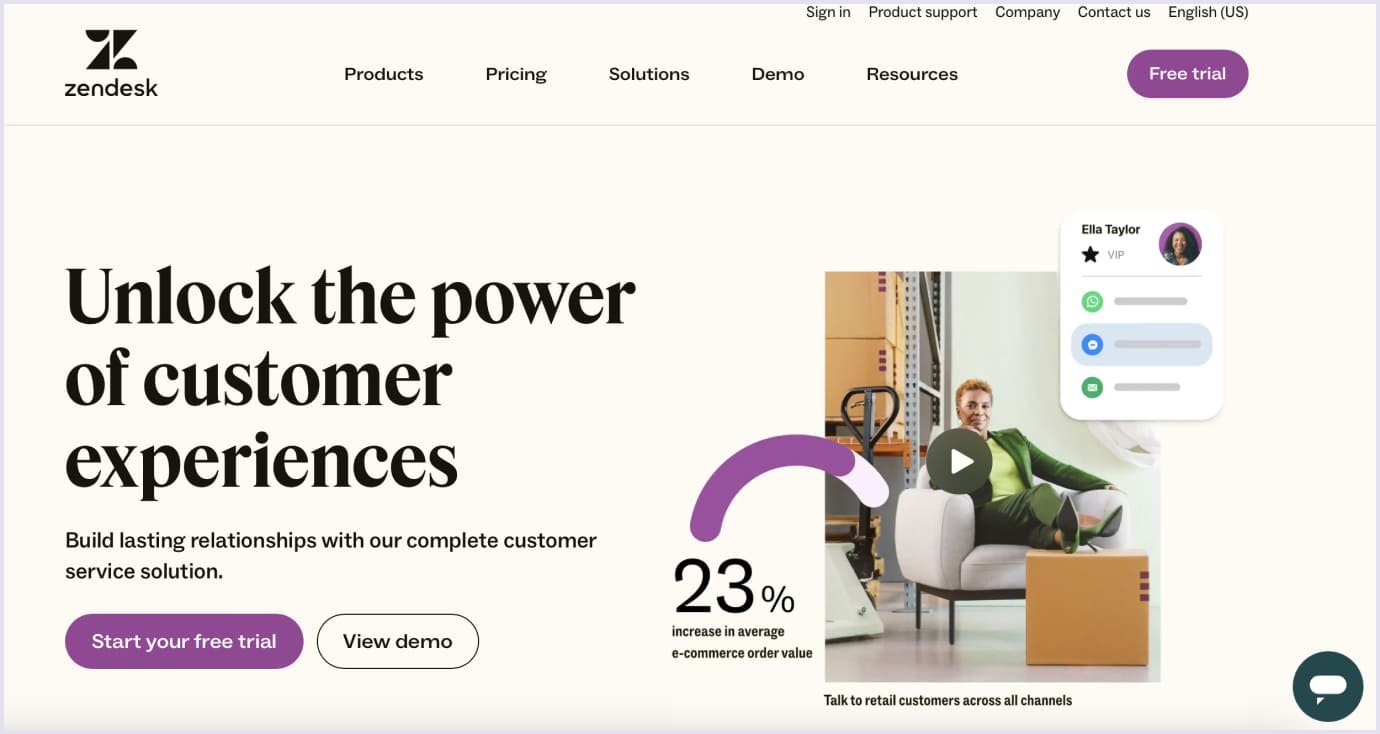
Email marketing
Emailing comes from marketing old school, but it remains a vital part of SaaS marketing strategy. As the SaaS customer lifecycle takes a long time, emailing helps you point out your product over time.
Typical emails that SaaS businesses send their customers include the following information:
- Description of a product and its features;
- Updates on new features;
- Announcements of webinars and blog posts;
- Company news and events.
An example of a helpful email is a notification from Squarespace on the expiration of the trial period. It shows care about the customers’ data and provides the opportunity to extend the trial period.
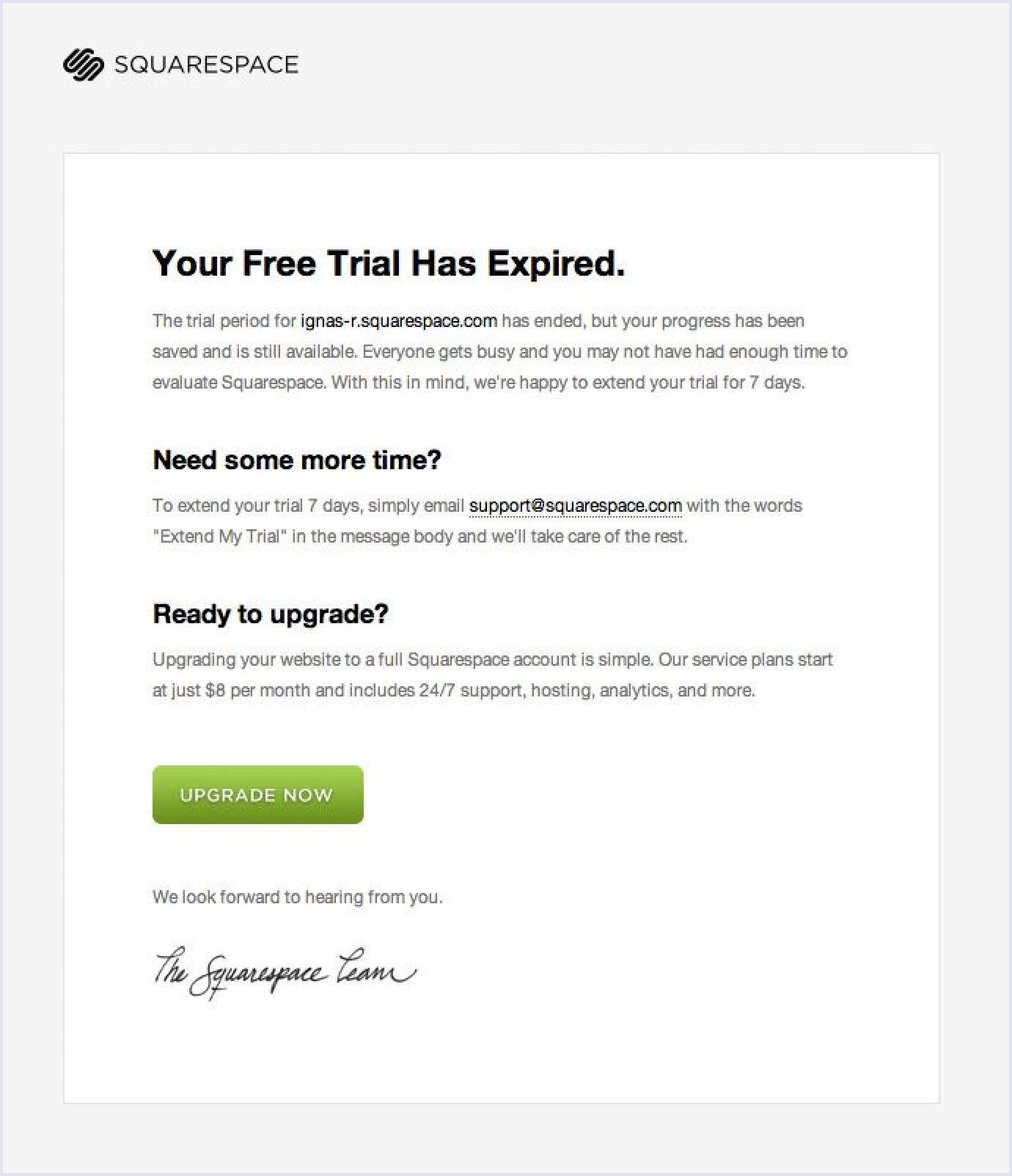
Also, it is productive for a SaaS business to use AMP (Accelerated Mobile Pages) emails in its digital marketing strategy. The aim is to help web pages and sites load fast on mobile. These emails have different peculiarities in code compared to traditional HTML emails. So, there are providers who offer AMP email templates, such as MailGun, Dyspatch, and Mailmodo.
Partnerships
Established companies have websites, blogs, and social media accounts with relevant audiences. You can join their SaaS marketing efforts and cross-present your product to your partner’s audience.
Building partnership programs involves universal efforts. It is helpful to reach out to content creators and enterprises that can help you present your product to wider audiences.
For example, a success story about a vast partnership comes from Canva, a free graphic design tool. When the company reached a certain number of fans, it decided to build more partnerships. So, it reached 9000 partners, including YouTubers and bloggers, podcasters, publishers, and brands. With the abundance of partners, the company’s revenue doubled month over month.
SaaS marketing strategies for lead nurturing
After attracting customers to use your SaaS product, it is vital to engage them so that they keep using it. This process is called lead nurturing. It means improving customer relationships at every part of the sales funnel. To make your nurturing program successful, you must listen to prospects' needs and give them the necessary information.

Referrals
A referral program rewards customers for sharing information on your SaaS. This is useful for B2B (business-to-business) SaaS. People who recommend your product to friends are called referrers, and new customers are referees.
The most impressive result of the referral program is Trello, a team tool that helps communicate and manage projects. The company offers a free month of Trello Gold for every friend who signs up for free. So, you can refer 12 friends at most and enjoy Trello Gold for a year.
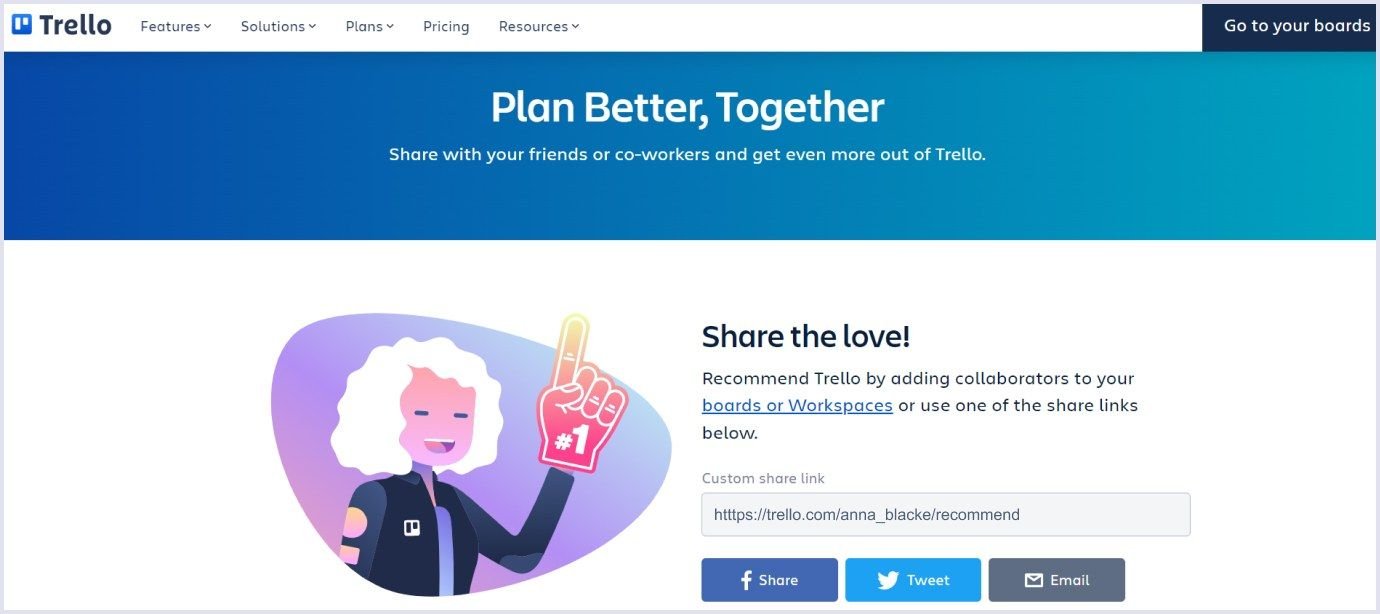
Free trial periods
When you describe expenses in your SaaS marketing plan, include a free trial in your financial planning. This will help you make your forecast of marketing spending more precise.
There are several options for offering free trials for your SaaS customers:
Free trial with or without a credit card
Offering free trials with a credit card allows you to save resources on leads that are not likely to convert. On the other hand, free trials without a credit card are widely used to promote SaaS products.
Free trial within a freemium model
This means offering free trials with limited or basic functionality. After trying your product for free, users can upgrade to a full-featured plan. For example, Hubstaff offers free time-tracking and team management software within freemium plans.
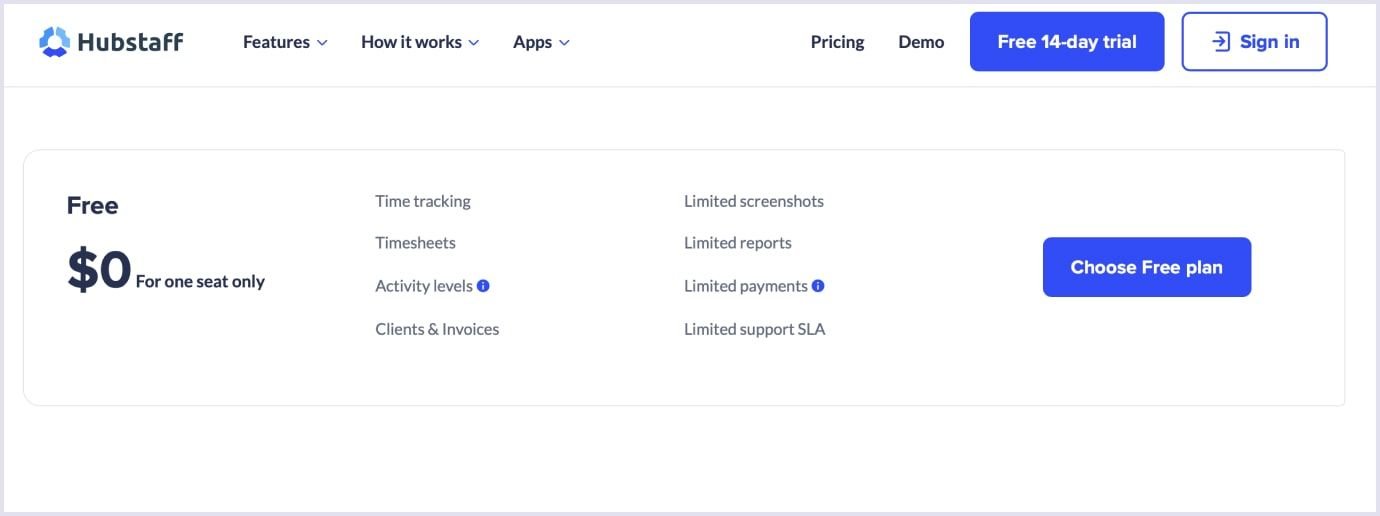
Free trial after a demo
In fact, a demo means explaining your product to users. It presents the value of your product in a shorter time and helps users better understand your product’s features. For example, Userpilot, a product growth monitoring platform, uses this approach to attract more customers.
Free trial with gamification
This approach means including rewards for actions. For instance, ProdPad, a product management platform, adds days to free trials after completing in-app actions.
Reviews and customer support
Reviews on your SaaS help build strong customer relationships, encouraging them to use your product. The better the reviews, the longer they stay with your product, meaning increased lifetime value.
Review sites or specialized forums present users’ feedback on your product. Users can share product details, case studies, and testimonials from other users. Such information on review sites is trustworthy from your SaaS customers' view.
Also, it is helpful to establish a vital bridge between your customer support and development teams. Such cooperation will help you change your SaaS in line with your customers’ needs.
An excellent example is Wistia, which created a SaaS for placing marketing content.

Let’s look at approaches to customer reviews that will help keep the customers engaged with your SaaS. Such practices include the following:
- Talk to your customers to understand their needs and thoughts on using the SaaS;
- Gather usage metrics and analytics;
- Check that the feedback-gathering tools are time-proven and scalable;
- Collect in-app usage feedback;
- Request feedback from a customer if they churn;
- Nurture the culture of listening to customer feedback in your SaaS company.
Easy sign-up process
After learning about your product's advantages, users will be eager to sign up for it. Making this process easy is vital, and there are several steps to improving the sign-up flow.
Let the process of creating the sign-up be well-thought and easy. SaaS companies should ask only for critical information before signing up. People are more likely to finish the sign-up process if it is straightforward.
Also, you can show what benefits signing up offers. You can offer a free trial or money-back guarantee. Include a clear call to action on the sign-up page so people know what they will get after finishing the sign-up.
Another benefit is including different sign-up options. For instance, Gusto is a tool for handling payroll and benefits and HR management. The SaaS offers sign-up possibilities by filling out a two-step form. The registration process involves questions like company name, number of employees, and company phone.
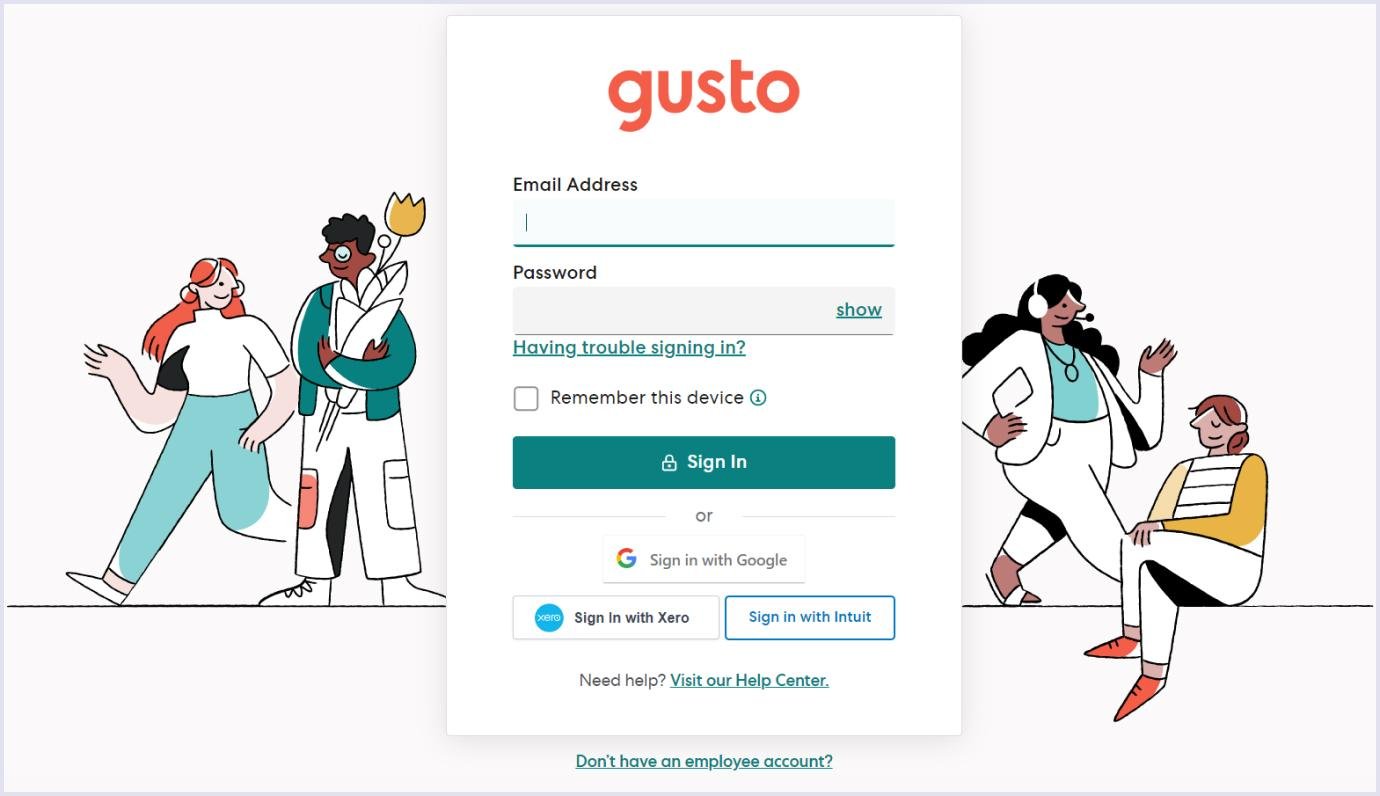
How Codica creates SaaS products
Our team creates custom software, including SaaS development services. Typically, we start with product discovery when we discuss the project's business opportunities, requirements, and risks for the project. This stage creates the base for the product's design, development, and marketing strategy.
At the development stage, we can add a tech stack necessary for working with SEO, email marketing, and analytics. Thus, our clients get stable, fast-loading, and scalable solutions that users enjoy.
For example, this is how we created a SaaS solution for real estate with a complex architecture. The client needed a fast-loading SaaS that could handle a lot of data, so we used the technologies to implement such a feature. The zest of the solution is 3D tours that show the property to users. So they can preview the real estate before visiting it.
Check our portfolio for more SaaS and custom software products we created.
Conclusion
Creating a SaaS marketing strategy involves interacting with prospects through many channels. First, you need to start with lead generation and customer acquisition. This process includes creating content. You can also share information on your SaaS over social media and partner with content creators and brands.
When your prospects become qualified leads, you should help them use your tool and carefully listen to their feedback. Customer support and their reactions to your product’s functionality will help you grow your SaaS business.
If you want to create a SaaS, we can help you. Contact us, we are eager to discuss the details. Our expert team will guide you and build a valuable SaaS product for your customers.
